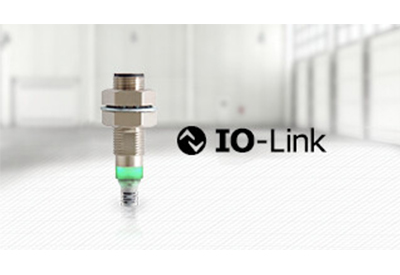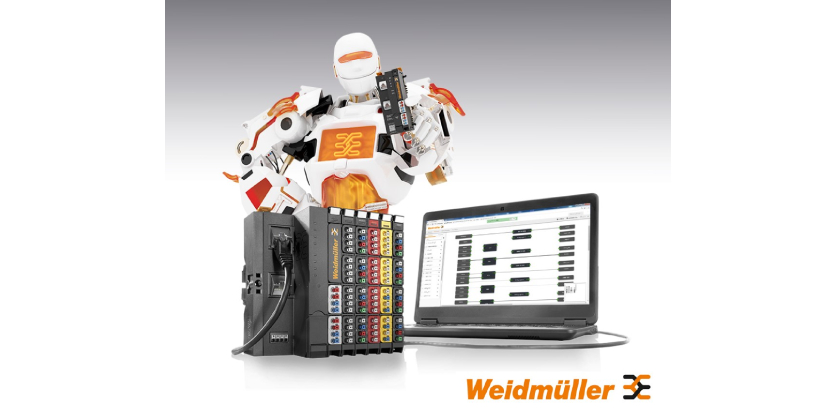Festo’s 2025 Innovations in Life Science Solve Laboratory Automation Challenges
August 6, 2025
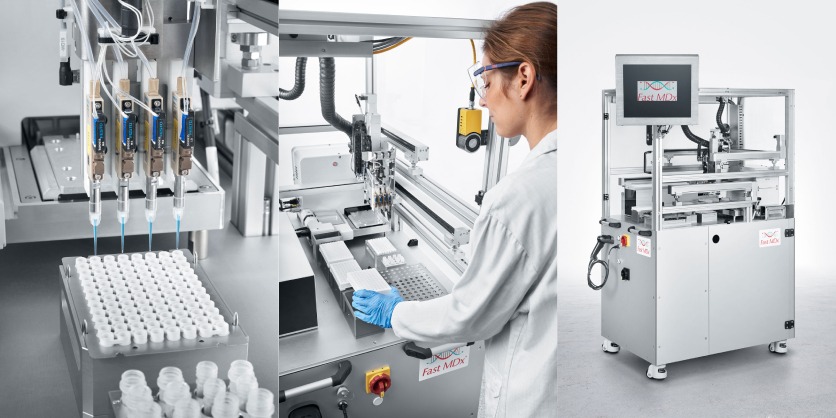
By Krystie Johnston
Festo is a global company headquartered in Germany and present in about 60 countries around the world. In 2024, they had over €3 billion turnover, and more than 8% of that was put into research and development for innovative technologies and emerging markets, like laboratory automation. In this article, Joshua Lamontagne, Product Market Manager for Life Science Products at Festo, shares some of these innovations.
Festo’s Life Science Development
For more than a century, Festo has become a leader in automation. Their automation portfolio consists of pneumatic and electrical automation solutions and technologies, as well as liquid and gas handling, and customer solutions, and Festo Didactic focuses on education and technical training for students and industry professionals alike. Developing innovations for the life sciences industry was a natural fit for Festo because they can provide standard products from their broad portfolio or develop innovative solutions to meet the unique challenges of this industry. Lamontagne, who works at Festo’s Technology Engineering Center in Boston (a hub for Life Science), knows firsthand the innovations they can offer.
Festo’s Life Science Portfolio, which includes liquid handling (dispensing, aspirating, pipetting), motion control (gripping, decapping, handling), and gas control, is complemented by their extensive factory automation portfolio already mentioned. “With our Life Science Portfolio, we are able to provide a wide range of different solutions, whether that is a single component, a part the customer can order out of our catalog, to individualized modules, like a valve manifold, all the way up to integrated, ready to install solutions like a full supply cabinet or control cabinet, to a full gantry system where Festo is controlling the motion as well as the end of arm tooling,” Lamontagne says.
Being close to customers is important to Festo, and they have several dedicated Technical Engineering Centers (TECs) located around the world, like the one in Boston, enabling them to be at the pulse of their customers and markets. Lamontagne says these sites are vital for global development, but also for region-specific development. At the TECs. Festo can provide customers with feasibility testing and parameter optimization, solution concepts and fast prototypes, installation and commissioning, and training.
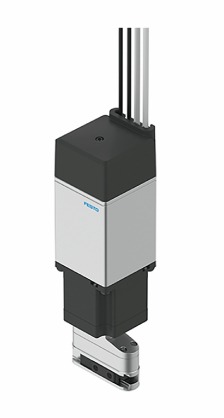
Electric Actuation Development
In the past, laboratory procedures like liquid handling and gas control were done manually. These processes were repetitive, and the volume of these tasks increased, labs began to automate these processes. The ideal automated solution would be consistent and flexible, enabling the same results from one laboratory to another. Lamontagne says that Festo developed the EHMD to solve this problem. The EHMD is a rotary gripper that can be either fully electric or hybrid (both electric and pneumatic) and is ideal for gripping small objects such as those used in laboratory automation.
Festo’s Life Science solutions helped manufacturing processes become faster and more dependable for a medical consumables manufacturer. The company makes indwelling needles and flat masks – typical consumables in the life sciences industry – and demand for these products meant they needed to increase product yield. Various components from Festo’s standard automation portfolio were used (mini slides, electrical axes, valves, air preparation, and grippers) and helped the company improve productivity and save space and time as well.
Fluidic Control Development
Festo’s new mass flow controller, the VEMD, was designed with laboratory automation in mind. A lot of manual gas control is done in labs with manual regulators or a needle valve, and the problem with performing gas control this way is it requires a lot of input from technicians and no feedback. Ideally, gas control should be more reproducible and scalable, and it can be with Festo’s VEMD. The VEMD solves this problem by providing a closed-loop system that can control flows in laboratory settings more accurately.
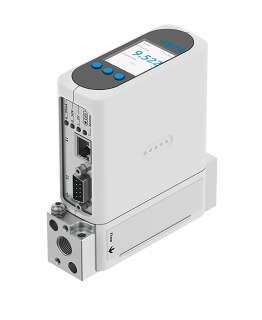
Lamontagne says that the closed-loop control is an expansion of Festo’s technology they use in their pneumatics. “We have very precise piezo electric pressure controllers. And piezo technology is great because it provides fast response times with lower power consumption. And we are taking those piezo pressure regulators and applying that same technology and thought process to control mass flow of a of a gas.” And he adds that VEMD offers space and cost savings, and better dynamic range compared to other mass flow controllers on the market.
Festo’s Life Science innovations helped a customer to standardize their automation for blood plasma fractionation. The customer produces plasma protein products and biotherapeutic drugs and came to Festo because they wanted standardized control cabinets and components to increase their efficiency. Festo was able to provide a control cabinet as a single part number that included their standard pneumatic offerings (air prep control valves, control pneumatic valves). And they offered the VEMD to flow the gases in the valves as well.
Media Separated Valves
In laboratory settings, oftentimes there are expensive reagents or chemistries that are used in the application, and contamination is a concern, either from a previous sample, or the internals of the valve. Solenoid valves require a spring and a plunger, and customers have concerns that the metal from the spring or plunger might leach chemicals into the sample and throw off the test results. Lamontagne says that media separated valves like Festo’s VYKA and VKYC solve this problem by separating the internals of the solenoid valve from the media that is flowing through the valve.
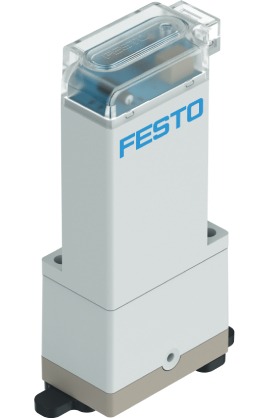
Media separated valves are not new to the market; but what makes Festo’s VYKA unique is that it is the smallest media separated valve on the market with a 1.2mm orifice, or for the given flow rate. “Thinking about laboratory automation and wanting to make compact solutions, the VYKA valve provides the best flow rate in the footprint. And it provides the highest flow rate for the given size of the valve. This is unique on the market, and it is something that we are happy to provide to the market in these laboratory automation examples.”
Festo’s VYKA can be used in life science applications as a compact dispensing solution to fill microwell plates. For applications like these, Festo can offer solutions to move the liquid through the circuit and the valves to control the liquid at the end of the circuit. Lamontagne says that Festo’s media separated valves can also be used in gas applications because of the low leakage in the valves compared to other pneumatic valves. “Our VYKA valves, since they are used in liquid applications, are 100% helium-leak tested at end of line to be about 100 times better than bubble tight.”
Conclusion
Festo’s innovations in Life Science are supporting the life science industry in many applications. Their standard product portfolio is often the only solution needed, but for applications that are more complicated, Festo’s Customer Solutions will work with their customers to develop a solution that works.
More Information
Interested in learning more? Visit Festo today!
Related Story
Festo’s Innovative Solutions for Laboratory Automation
The healthcare industry encounters numerous challenges in meeting demand and time-to-market for new products and innovations. Festo’s Life Science division offers innovative solutions for laboratory automation and medical technology companies to address these challenges.




